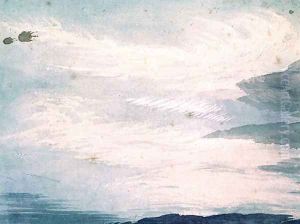Luke Howard Paintings
Luke Howard, though not traditionally known as an artist, made significant contributions to the field of meteorology that indirectly influenced the visual arts, particularly landscape painting. Born on November 28, 1772, in London, England, Howard was originally a chemist by trade. However, his enduring legacy is not in chemistry but in his groundbreaking work on the classification of clouds, which had a profound effect on how the natural world was depicted in art.
Howard's fascination with the weather and its patterns led him to study clouds meticulously. In 1802, he presented a paper entitled 'On the Modification of Clouds' to the Askesian Society in London. In this work, he proposed names for cloud types that are still in use today, including cumulus, stratus, and cirrus. This classification system provided a language for meteorologists and artists alike to describe the ever-changing skies more accurately.
While Luke Howard was not an artist in the conventional sense, his influence on the visual arts cannot be underestimated. His work offered artists a new way to observe and depict the sky, contributing to the realism and emotional depth of landscapes. Painters of the Romantic period, in particular, were inspired by Howard's classifications, as they sought to capture the sublime beauty and power of nature. His work bridged the gap between science and art, showing that detailed scientific observation could enhance artistic creativity and expression.
Howard continued to study and write about meteorology throughout his life, earning respect and recognition from both the scientific community and the public. Despite his primary identity as a scientist, his legacy also endures in the arts, illustrating the profound and unexpected ways in which different fields of human endeavor can inform and enrich each other. Luke Howard passed away on March 21, 1864, in Tottenham, a suburb of London, leaving behind a body of work that continues to influence both science and art.
